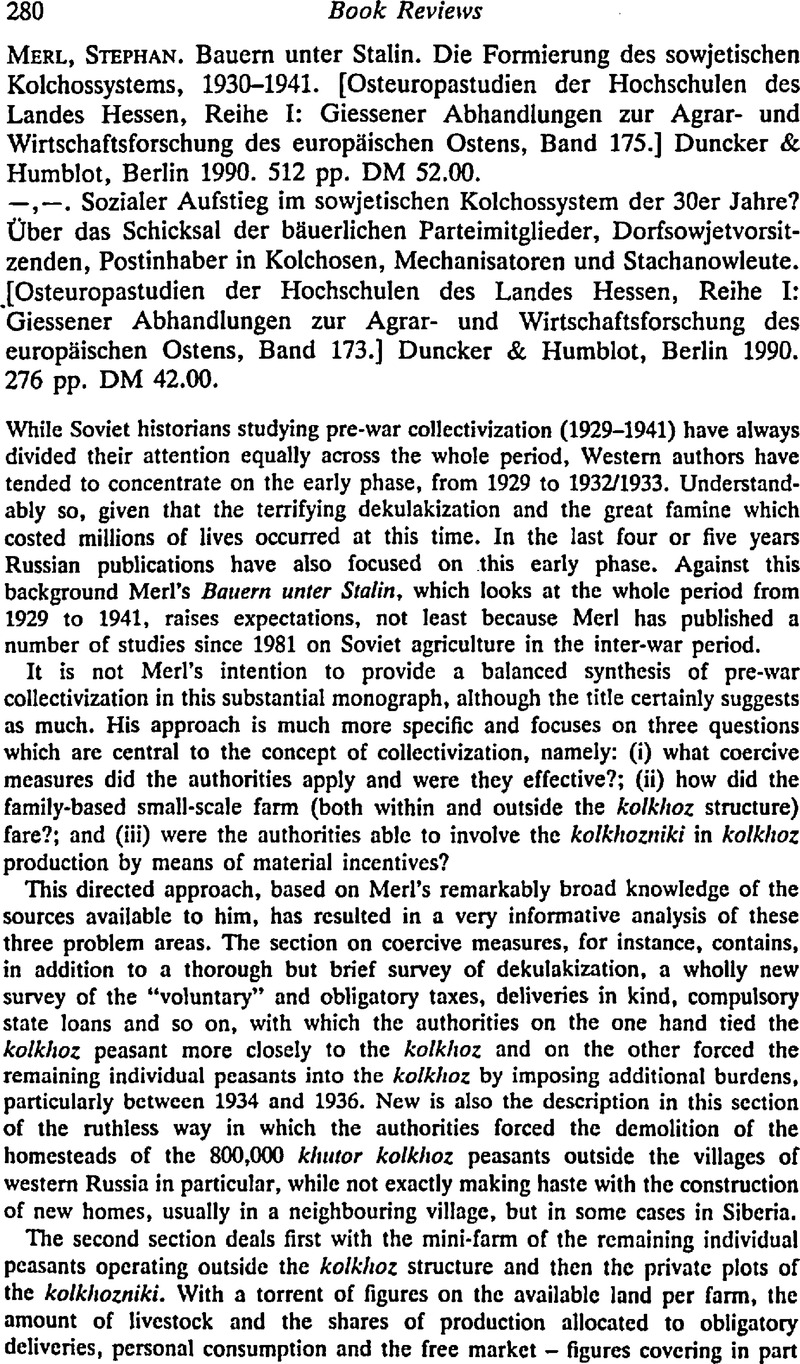No CrossRef data available.
Article contents
Stephan Merl. Bauern unter Stalin. Die Formierung des sowjetischen Kolchossystems, 1930–1941. [Osteuropastudien der Hochschulen des Landes Hessen, Reihe I: Giessener Abhandlungen zur Agrar- und Wirtschaftsforschung des europaischen Ostens, Band 175.] Duncker & Humblot, Berlin1990. 512 pp. DM 52.00. - Stephen Merl Sozialer Aufstieg im sowjetischen Kolchossystem der 30er Jahre? Über das Schicksal der bäuerlichen Parteimitglieder, Dorfsowjetvorsitzenden, Postinhaber in Kolchosen, Mechanisatoren und Stachanowleute. [Osteuropastudien der Hochschulen des Landes Hessen, Reihe I: Giessener Abhandlungen zur Agrar- und Wirtschaftsforschung des europaischen Ostens, Band 173.] Duncker & Humblot, Berlin1990. 276 pp. DM 42.00.
Published online by Cambridge University Press: 20 February 2009
Abstract

- Type
- Book Reviews
- Information
- Copyright
- Copyright © Internationaal Instituut voor Sociale Geschiedenis 1994
References
1 Denisovich, M.N., Lichnye krest'ianskie khoziaistva na Urale (1930–1985 gg.) (Yekaterinburg, 1991), p. 64Google Scholar.
2 Published by Zemskov, V.N. in “Spetsposelentsy”, in Sotsiologicheskle issledovaniia, 1990, no. 11 (11)Google Scholar. Merl's survey covers the period to September 1931 and counts 346,000 families, while the NKVD survey runs to the end of 1931 and counts 388,334 families.
3 The party publication Partiinoe stroitel'stvo is the best source of party statistics, but the background information it provided on the figures was generally very sketchy. The most detailed analysis of gross and net figures is contained in V.V., , “Kolichestvennyi i kachestvennyi sostav partii”, in Partiinoe stroitel'stvo 1932, no. 9, pp. 48–51Google Scholar. (Merl does not refer to this article.) V.V. puts the gross increase for 1931 at 997,000, the net increase at 821,000, a difference of 171,000. This figure includes 50,000 members expelled, 13,000 who left voluntarily, 13,000 who died, and 90,000(1) who left for an unknown destination.
4 It is worth mentioning that Thorniley, Daniel, in his The Rise and Fall of the Soviet Rural Communist Party, 1927–39 (London, 1989)Google Scholar, based on virtually the same material but not referred to by Merl, , says that it is not possible to quantify the vydviziienie of peasant party members around 1930 (p. 41)Google Scholar.
5 Oja, Matt F., “Traktorizatsiia as Cultural Conflict, 1929–1933”, in The Russian Review, vol. 51 (1992), pp. 343–362CrossRefGoogle Scholar; and Oja, Matt F., “K voprosu o kadrakh mekhanizatorov v sovetskom sePskom khoziaistve (1929–1933 gg.)”, in Otechestvennaia istoriia, 1993, no. 2, pp. 176–183Google Scholar. Oja makes no reference to Merl.




